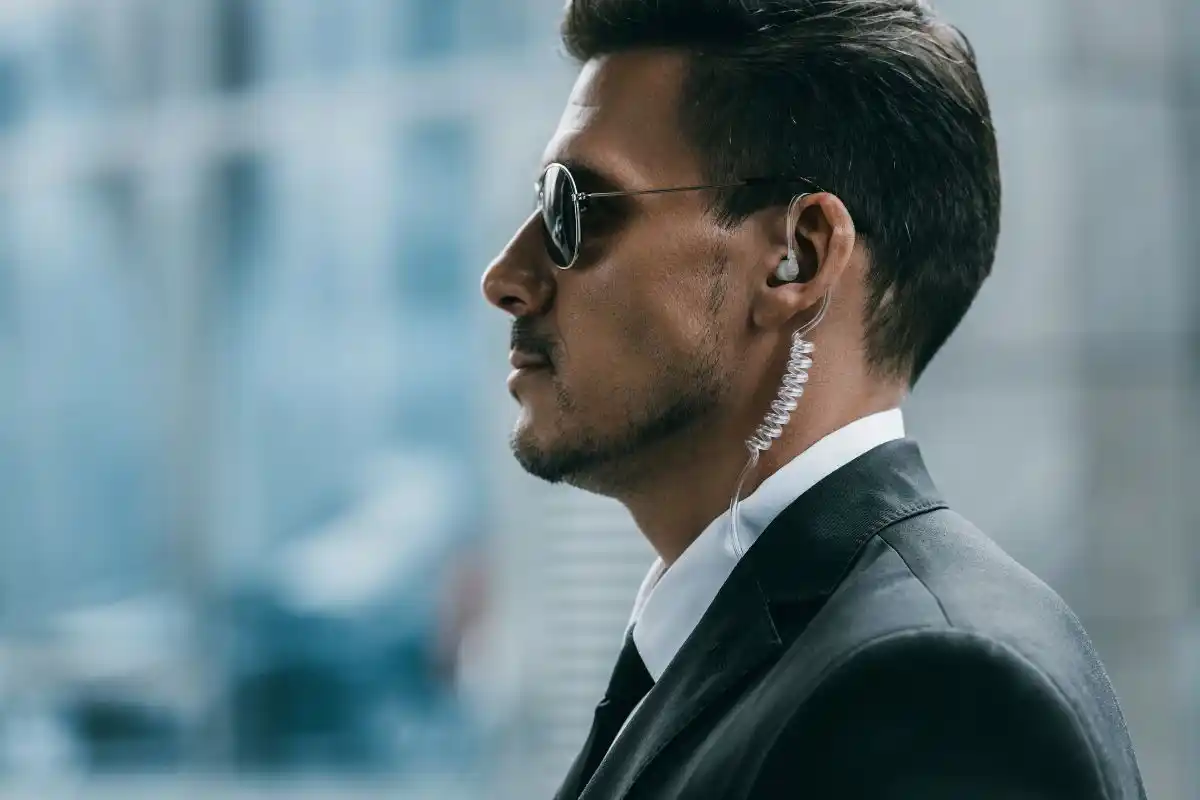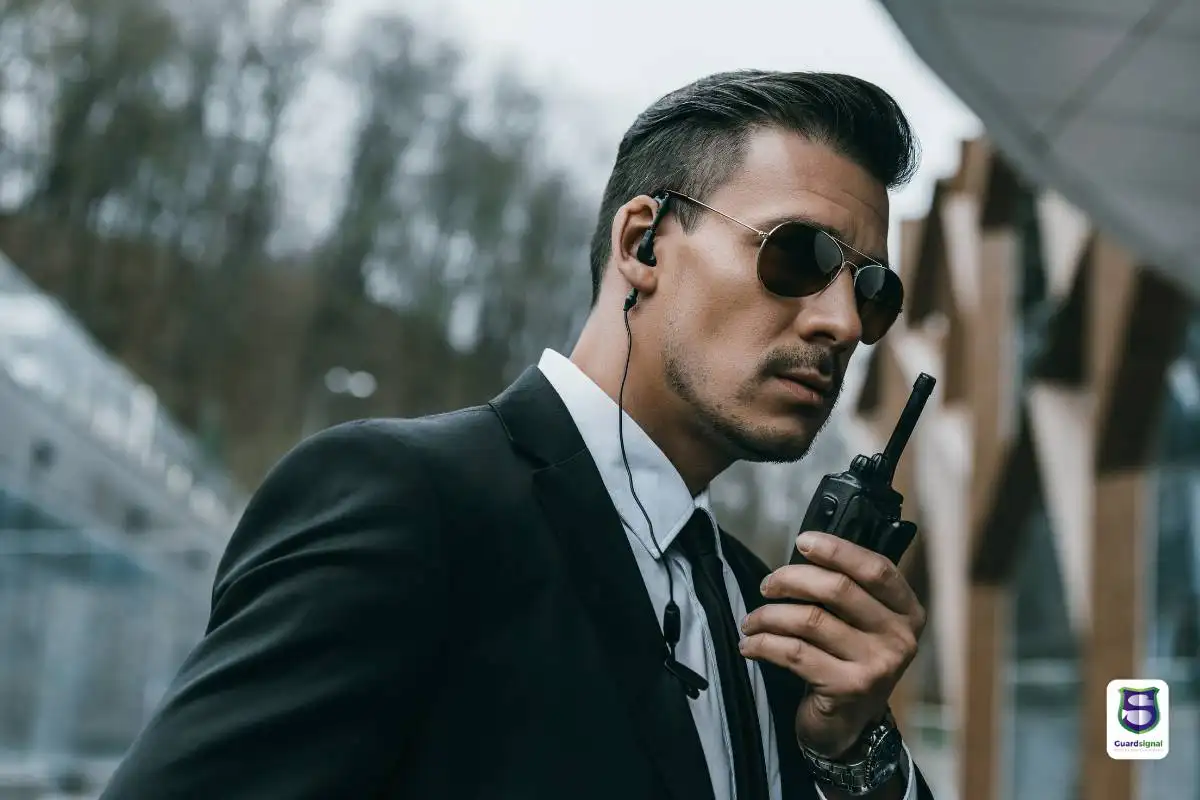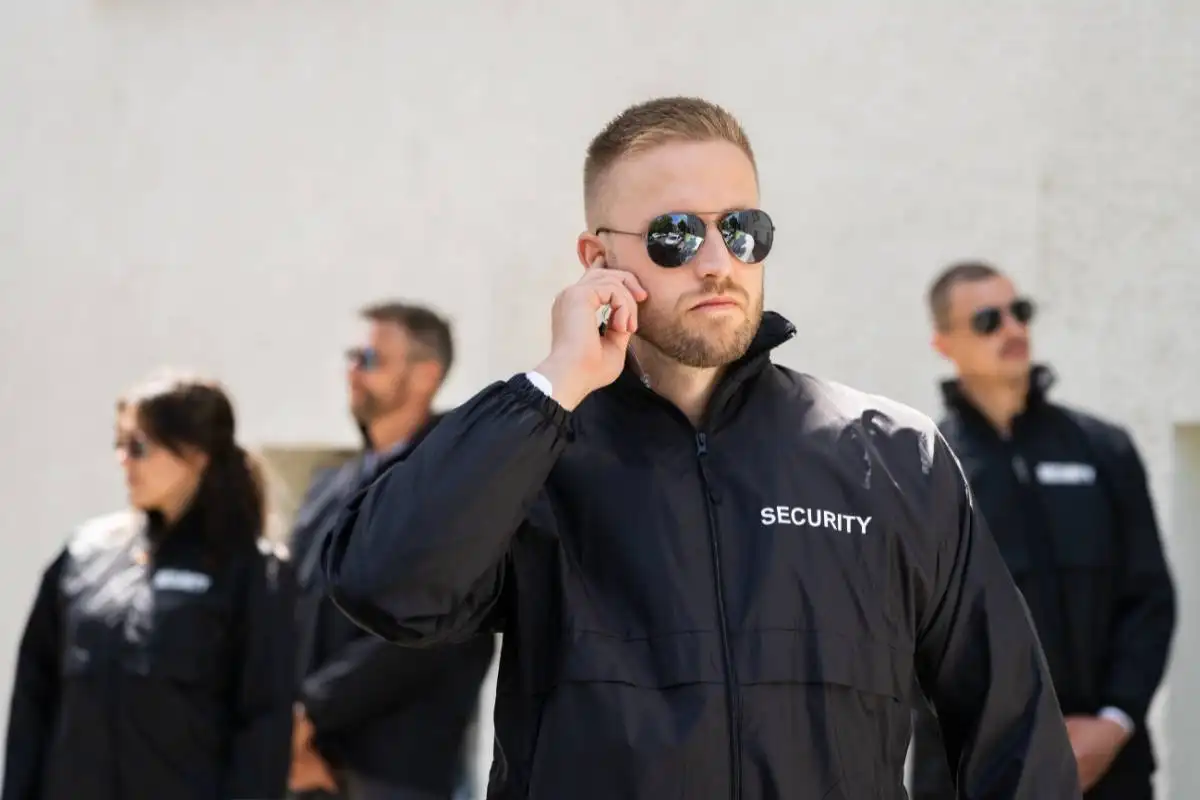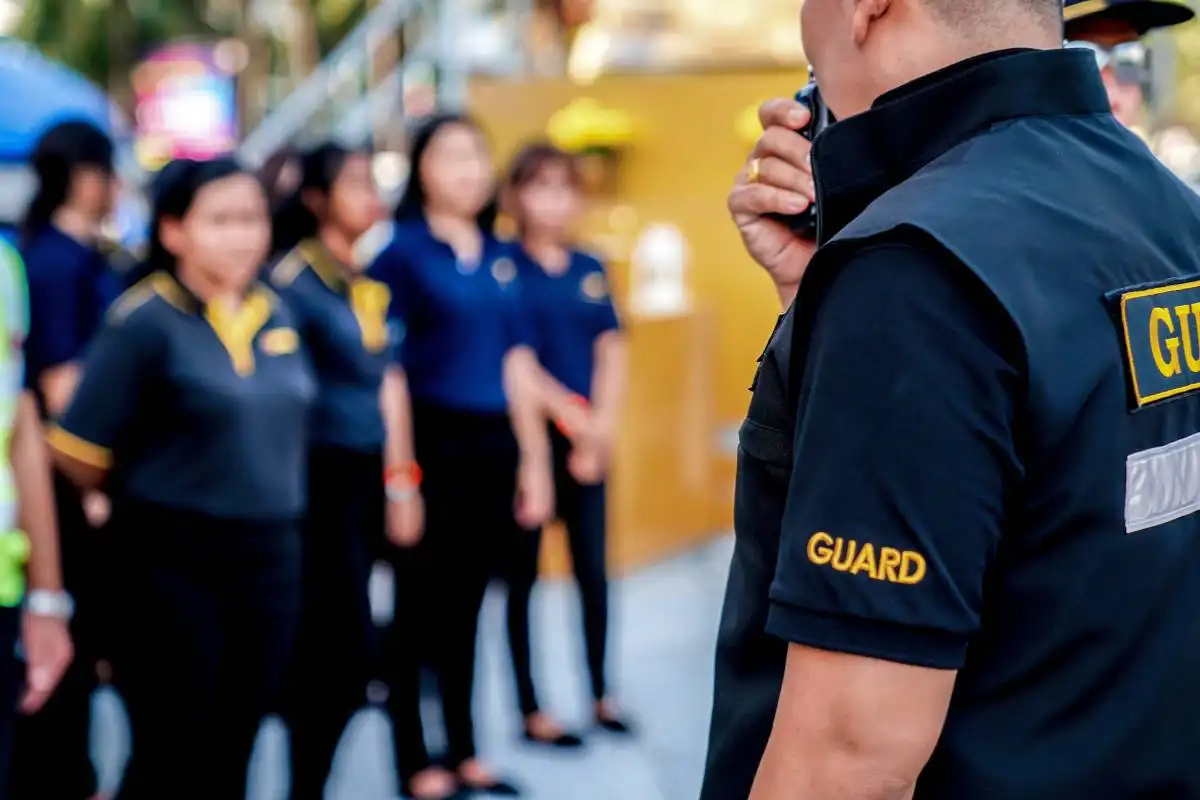Ever wonder how those tough-looking security guards stay out of harm’s way? It’s not all about muscle and intimidation. The truth is, that security work can be risky business. But don’t worry – we’ve got the inside scoop on keeping our protectors protected.
Security guard injuries are no joke. They’re out there facing potential dangers every day, from angry customers to workplace accidents. So how do we make sure they stay safe while keeping us safe?
Why Security Guard Safety Matters
Think about it – security guards are the first line of defense in many situations. They’re the ones running towards trouble when everyone else is running away. That’s why their safety is crucial.
When guards get hurt, it’s not just bad for them. It impacts the whole security operation. Injured guards mean less protection, higher costs, and lower morale. Nobody wins when safety takes a back seat.
But here’s the good news: most security guard injuries are preventable. With the right approach, we can slash those injury rates and create a safer work environment for everyone.
Common Security Guard Injuries and How to Avoid Them

Slips, Trips, and Falls: The Silent Menace
You might not think of slipping on a wet floor as a major security threat, but these accidents are more common than you’d expect. Security guards are always on the move, patrolling different areas. That means more chances to take a tumble.
So how do we tackle this? First up, proper footwear is a must. We’re talking non-slip soles that can handle any surface. Regular checks of patrol areas for hazards like spills or loose carpeting can make a big difference too.
Training guards to stay alert to their surroundings is key. It’s not just about watching for bad guys – it’s about spotting that patch of ice or that uneven step before it becomes a problem. And let’s not forget good lighting. A well-lit area is a safer area, plain and simple.
Confrontations and Assaults
Let’s face it – sometimes security work means dealing with not-so-friendly folks. Angry customers, rowdy patrons, or even criminals can all pose a threat. However, there are ways to minimize the risk of physical confrontations.
De-escalation techniques are a security guard’s best friend. Learning how to calm tense situations can prevent many altercations before they start. Role-playing different scenarios during training can help guards practice these skills in a safe environment.
Proper positioning and situational awareness are crucial too. Guards should always be mindful of their surroundings and potential escape routes. Working in pairs when possible adds an extra layer of safety.
And let’s not forget about communication. Clear protocols for calling for backup or alerting law enforcement can make all the difference when things get dicey.
Repetitive Strain Injuries
Not all security guard injuries come from dramatic incidents. Sometimes it’s the day-to-day grind that takes its toll. Repetitive strain injuries can creep up on guards who spend long hours standing, walking, or performing the same tasks over and over.
The fix? Mix things up. Rotating duties and encouraging regular breaks can help prevent these injuries. Ergonomic equipment like supportive chairs for desk duty or proper holsters for gear can make a big difference too.
Stretching and exercise programs tailored for security work can also help guards stay limber and strong. It’s not just about being tough – it’s about being prepared for the physical demands of the job.
Essential Safety Gear for Security Guards

Body Armor
Body armor isn’t just for SWAT teams anymore. Modern body armor is lightweight, comfortable, and can be a literal lifesaver for security guards in high-risk settings. But it’s not one-size-fits-all – the right armor depends on the specific threats a guard might face.
For most security work, soft armor that protects against handguns is sufficient. It can be worn under a uniform without being obvious. For higher-risk jobs, harder armor plates might be necessary.
The key is finding the right balance between protection and mobility. Guards need to be able to move and do their jobs without feeling like they’re lugging around a tank.
Less-Lethal Weapons
Sometimes guards need more than just their wits to handle a threat. Less-lethal weapons like pepper spray, batons, or tasers can provide an extra layer of protection without the risks associated with firearms.
But here’s the catch – these tools are only as good as the training behind them. Guards need to know not just how to use these weapons, but when it’s appropriate to do so. Regular training and clear guidelines are must-haves.
It’s also crucial to stay up-to-date on local laws regarding less-lethal weapons. What’s legal in one state might land you in hot water in another.
Communication Devices
In the security world, information is power. That’s why reliable communication devices are some of the most important safety tools a guard can have.
We’re not just talking about walkie-talkies (though those are still useful). Modern security operations might use smartphones with specialized apps, GPS tracking, or even wearable tech to keep guards connected.
The goal is to ensure that help is always just a button press away. Whether it’s calling for backup or reporting a suspicious situation, clear and instant communication can prevent many dangerous situations from escalating.
Training

Physical Fitness
Being a security guard isn’t all about being big and tough. But let’s be real – a certain level of physical fitness can go a long way in preventing injuries and handling the demands of the job.
A good fitness program for security guards should focus on endurance, strength, and flexibility. It’s not about bench pressing a car – it’s about being able to stand for long periods, move quickly when needed, and avoid strains and sprains.
Encouraging regular exercise and providing resources like gym memberships or on-site fitness equipment can make a big difference. Some security companies even incorporate fitness tests into their hiring and evaluation processes.
Mental Preparedness
Physical skills are important, but the mind is a security guard’s most powerful weapon. Mental preparedness training can help guards stay calm under pressure, make quick decisions, and avoid panic in stressful situations.
This kind of training might include stress management techniques, decision-making exercises, and scenario-based training. The goal is to build confidence and competence in handling a wide range of potential situations.
Regular refresher courses and ongoing education are key. The security landscape is always changing, and guards need to stay sharp to stay safe.
First Aid and Emergency Response
When things go wrong, security guards are often the first on the scene. That’s why solid first aid and emergency response training is a must.
We’re talking beyond just basic CPR. Guards should be trained to handle a variety of medical emergencies, from heart attacks to severe bleeding. They should also know how to secure a scene and work with emergency services when they arrive.
Regular drills and simulations can help keep these skills fresh. After all, you never know when you might need to save a life – maybe even your own.
Creating a Culture of Safety

Leadership’s Role in Security Guard Safety
Safety starts at the top. When leadership makes safety a priority, it trickles down to every level of the operation. This means more than just talking about safety – it means putting resources and effort into making it happen.
Regular safety meetings, open communication channels for reporting concerns, and a willingness to invest in safety equipment and training all send a clear message: we care about our guards’ well-being.
Leaders should also lead by example. If managers follow safety protocols and take precautions seriously, guards are more likely to do the same.
Encouraging Reporting and Learning from Incidents
No security operation is perfect. Incidents and near-misses will happen. The key is learning from them to prevent future problems.
Creating a culture where guards feel comfortable reporting safety concerns or incidents is crucial. This means no retaliation for reporting issues and a focus on fixing problems rather than placing blame.
After any incident, a thorough review should take place. What went wrong? What went right? How can we do better next time? This kind of analysis can lead to valuable insights and improvements in safety procedures.
Recognizing and Rewarding Safe Practices
Everyone likes a pat on the back for a job well done. Recognizing and rewarding guards who consistently follow safety protocols can reinforce good habits and motivate others to do the same.
This doesn’t have to be elaborate. Simple acknowledgments during team meetings, safety awards, or even small bonuses for accident-free periods can make a big difference. The point is to show that safe practices are valued and appreciated.
It’s also important to celebrate safety milestones as a team. Reaching a certain number of days without an incident can be a cause for celebration and a reminder of the importance of ongoing vigilance.
Leveraging Technology for Enhanced Safety

Smart Surveillance
Modern surveillance systems aren’t just about catching bad guys on camera. They can be powerful tools for preventing security guard injuries too.
AI-powered cameras can detect unusual behavior or potential threats, alerting guards before a situation escalates. This gives guards a heads-up and allows them to approach potentially dangerous situations with caution.
Video analytics can also help identify patterns or areas where incidents frequently occur. This information can be used to adjust patrol routes or implement additional safety measures in high-risk areas.
Wearable Tech
Wearable technology is changing the game for security guard safety. From smartwatches that can detect falls to body cameras that provide visual evidence of incidents, these gadgets are adding an extra layer of protection.
Some wearables can even monitor vital signs, alerting supervisors if a guard shows signs of distress. Others include panic buttons for quick alerts in emergencies.
The key is finding the right balance between helpful monitoring and respecting guards’ privacy. Clear policies on data use and storage are a must when implementing any wearable tech program.
Mobile Apps
Smartphones aren’t just for texting and social media. Custom mobile apps can be powerful tools for enhancing security guard safety.
These apps might include features like quick incident reporting, access to safety protocols, or real-time communication with team members. Some even use GPS to track guard locations and ensure they’re following assigned patrol routes.
The best security apps are user-friendly and integrate seamlessly with existing systems. After all, a safety tool is only useful if guards use it.
Wrapping It Up
There you have it – the ultimate guide to keeping security guards safe on the job. From proper training and equipment to leveraging the latest tech, we’ve covered all the bases.
Remember, preventing security guard injuries isn’t just about following rules or buying fancy gear. It’s about creating a culture where safety is everyone’s responsibility. It’s about staying alert, staying prepared, and always looking out for each other.
By implementing these strategies and staying committed to ongoing improvement, we can make the security industry safer for everyone. After all, those who protect us deserve to be protected too.
So let’s get out there and make it happen. Because at the end of the day, the ultimate guide to preventing security guard injuries is about one thing: making sure everyone goes home safe.
- 09 Steps Guide to Writing Security Incident Reports - October 24, 2024
- What A Security Guard Might Check From You - October 24, 2024
- What Can Security Guards Legally Do And Can’t Do - October 24, 2024
